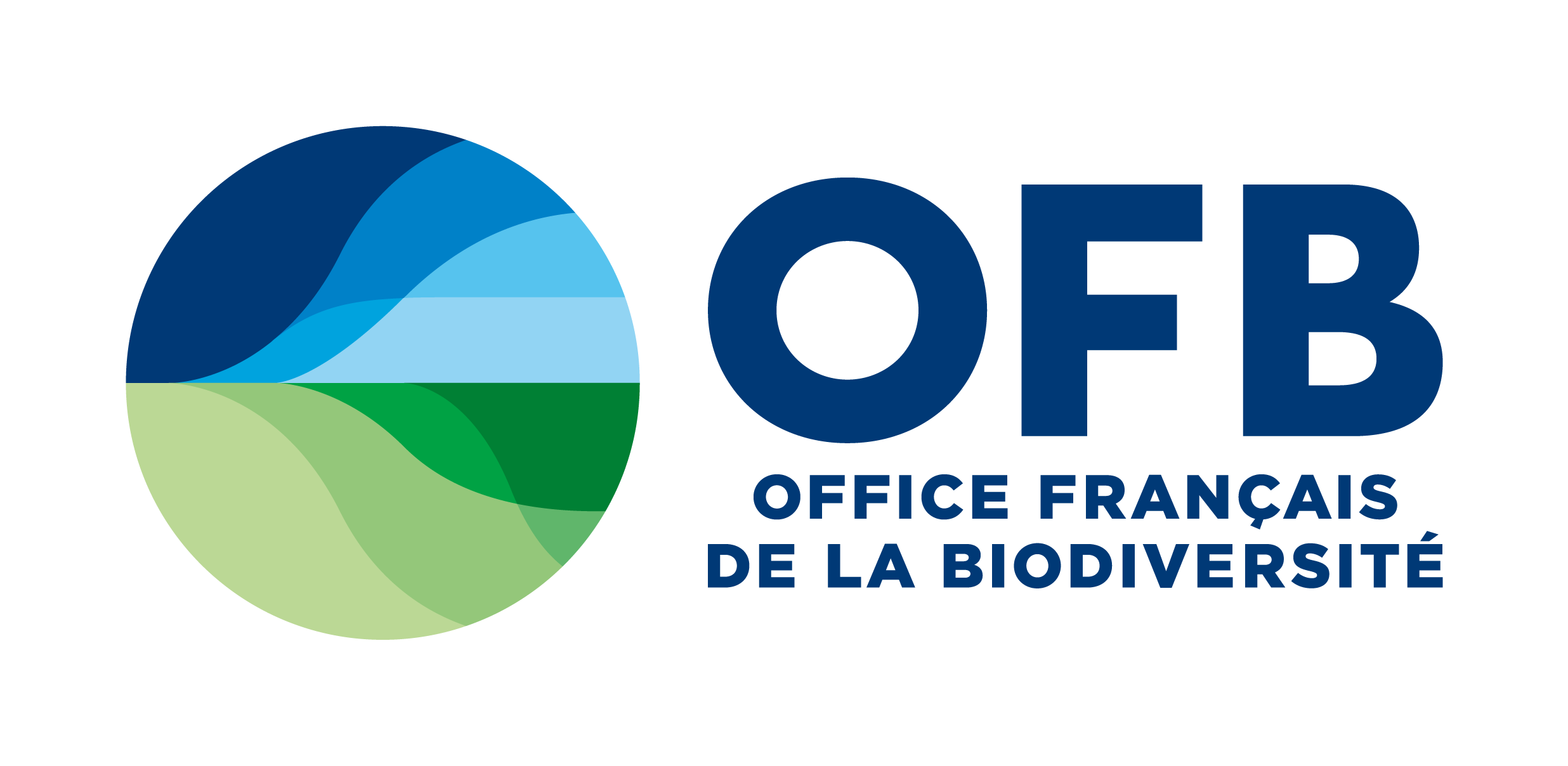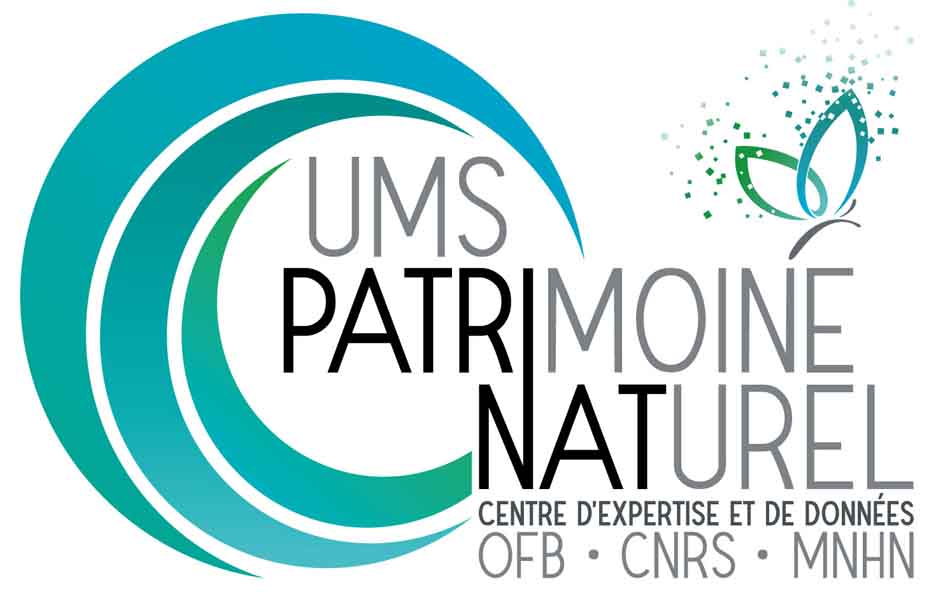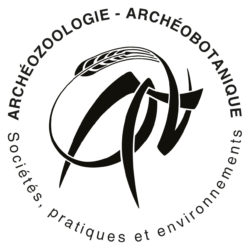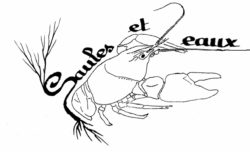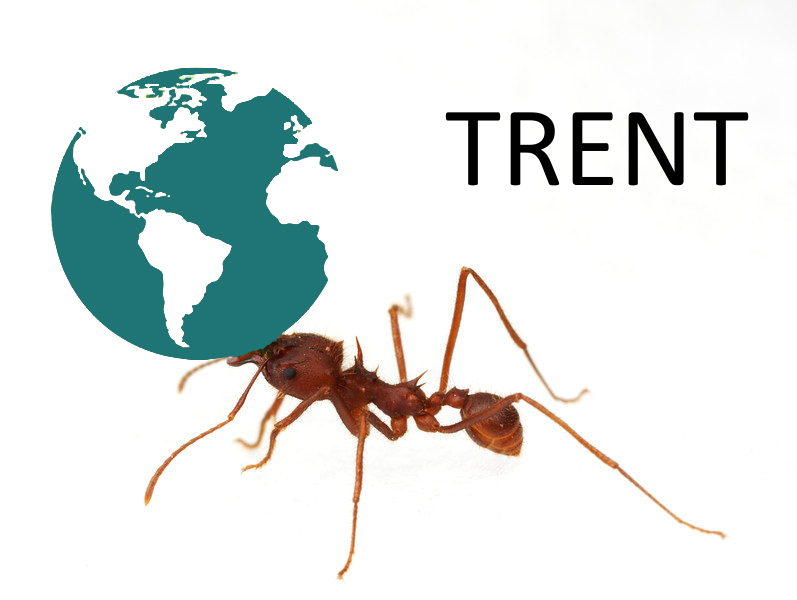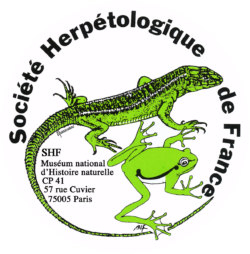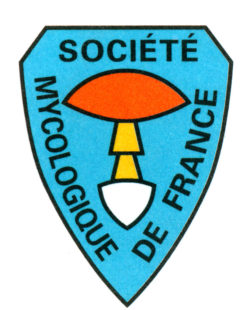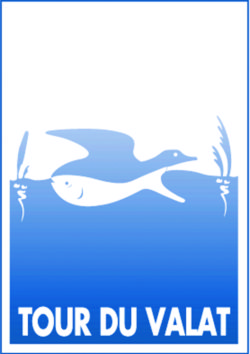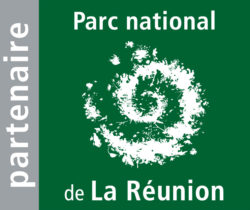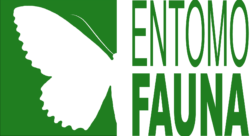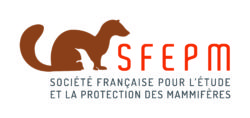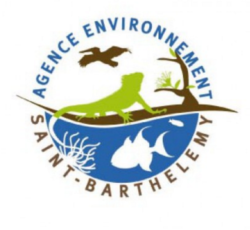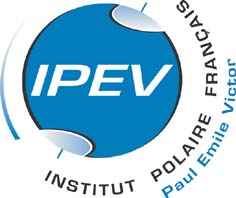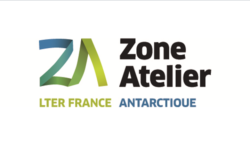Références bibliographiques relatives au groupe des vers plathelminthes et annélides
Pour rechercher un mot clé dans la page, taper le mot dans l’outil « rechercher » de votre navigateur.
Addison, J. A. 2009. Distribution and impacts of invasive earthworms in Canadian forest ecosystems. Biological Invasions 11(1): 59-79. Lire
Arias, A., & al. 2013. Revealing polychaetes invasion patterns: Identification, reproduction and potential risks of the Korean ragworm, Perinereis linea (Treadwell), in the Western Mediterranean. Estuarine, Coastal and Shelf Science 131: 117-128. Lire
Armendáriz, L., & al. 2011. Manayunkia speciosa Leidy (Polychaeta: Sabellidae): introduction of this nonindigenous species in the Neotropical Region (Uruguay river, South America). Biological Invasions 13(2): 281-284. Lire
Baker, G. H., & al. 2006. Introduced earthworms in agricultural and reclaimed land: their ecology and influences on soil properties, plant production and other soil biota. Biological Invasions 8(6): 1301-1316. Lire
Bal, T. L.,& al. 2018. Evidence of damage from exotic invasive earthworm activity was highly correlated to sugar maple dieback in the Upper Great Lakes region. Biological Invasions 20(1): 151-164. Lire
Bastrop, R. & M. Blank. 2006. Multiple Invasions – A Polychaete Genus Enters the Baltic Sea. Biological Invasions 8(5): 1195-1200. Lire
Bazterrica, M., & al. 2012. Effects of an invasive reef-building polychaete on the biomass and composition of estuarine macroalgal assemblages. Biological Invasions 14(4): 765-777. Lire
Belote, R. T. & Jones, R. 2009. Tree leaf litter composition and nonnative earthworms influence plant invasion in experimental forest floor mesocosms. Biological Invasions 11(4): 1045-1052. Lire
Bouzid, W., & al. 2013. Pathways of cryptic invasion in a fish parasite traced using coalescent analysis and epidemiological survey. Biological Invasions 15(9): 1907-1923. Lire
Carbayo, F., & al. 2016. The true identity of Obama (Platyhelminthes: Geoplanidae) flatworm spreading across Europe. Zoological Journal of the Linnean Society 177(1): 5-28. Lire
Carbayo, F., Pedroni, J., & Froehlich, E. 2008. Colonization and extinction of land planarians (Platyhelminthes, Tricladida) in a Brazilian Atlantic Forest regrowth remnant. Biological Invasions 10(7): 1131. Lire
Chang, C.-H., et al. 2018. Co-invasion of three Asian earthworms, Metaphire hilgendorfi, Amynthas agrestis and Amynthas tokioensis in the USA. Biological Invasions 20(4): 843-848. Lire
Cheng, X.-Y., & al. 2008. Competitive displacement of the native species Bursaphelenchus mucronatus by an alien species Bursaphelenchus xylophilus (Nematoda: Aphelenchida: Aphelenchoididae): a case of successful invasion. Biological Invasions 11(2): 205-213. Lire
Costello, D. M., & al. 2010. Do non-native earthworms in Southeast Alaska use streams as invasional corridors in watersheds harvested for timber? Biological Invasions 13(1): 177-187. Lire
Culver, C. S. & Kuris, A. M. 2000. The Apparent Eradication of a Locally Established Introduced Marine Pest. Biological Invasions 2(3): 245-253. Lire
Emde, S., & al. 2012. Invasive Ponto-Caspian Amphipods and Fish Increase the Distribution Range of the Acanthocephalan Pomphorhynchus tereticollis in the River Rhine. PLoS ONE 7(12): e53218. Lire
Essink, K. & Dekker, R. 2002. General Patterns in Invasion Ecology Tested in the Dutch Wadden Sea: The Case of a Brackish-Marine Polychaetous Worm. Biological Invasions 4(4): 359-368. Lire
Fitzgerald, E. M. G., & al. 2012. First giant bony-toothed bird (Pelagornithidae) from Australia. Journal of Vertebrate Paleontology 32(4): 971-974. Lire
Frelich, L. E., & al. 2006. Earthworm invasion into previously earthworm-free temperate and boreal forests. Biological Invasions 8(6): 1235-1245. Lire
Fugère, M., & al. 2017. Exotic earthworms dispersion through protected forest areas and their potential impacts on nitrous oxide production. Biological Invasions 19(3): 773-783. Lire
Gastineau, R & Justine, J.-L. 2020. Complete mitogenome of the invasive land flatworm Parakontikia ventrolineata, the second Geoplanidae (Platyhelminthes) to display an unusually long cox2 gene, Mitochondrial DNA Part B, 5:3, 2115-2116. Lire
Gendron, A. D., & al. 2011. Invasive species are less parasitized than native competitors, but for how long? The case of the round goby in the Great Lakes-St. Lawrence Basin. Biological Invasions 14(2): 367-384. Lire
González, G., & al. 2006. Earthworm invasions in the tropics. Biological Invasions 8(6): 1247-1256. Lire
Greiner, H. G., & al. 2012. Impacts of invasive Asian (Amynthas hilgendorfi) and European (Lumbricus rubellus) earthworms in a North American temperate deciduous forest. Biological Invasions 14(10): 2017-2027. Lire
Guillaumin, M. 2018. Des vers invasifs en Bretagne. Sciences Ouest. 364: 3.
Lire
Guyonnet, B. & Borg, D. 2015. Premier signalement de l’espèce introduite Euchone limnicola Reish, 1959 (Polychaeta : Sabellidae) sur les côtes françaises de la Mer du Nord (Grand Port Maritime de Dunkerque). Les cahiers naturalistes de l’Observatoire marin, 2015, IV(2) : 15–23. Lire
Haavik, L. J., & al. 2016. Horizontal transmission of a parasitic nematode from a non-native to a native woodwasp? Biological Invasions 18(2): 355-358. Lire
Haran J., Roques A., Bernard A., Robinet C., Roux G. 2015. Altitudinal barrier to the spread of an invasive species: Could the Pyrenean chain slow the natural spread of the pinewood Nematode?. Plos One, 25 p. DOI : 10.1371/journal.pone.0134126. Lire
Hayward, C. J., & al. 2001. Global Spread of the Eel Parasite Gyrodactylus Anguillae (Monogenea). Biological Invasions 3(4): 417-424. Lire
Hendrix, P. F. 2006. Biological invasions belowground—earthworms as invasive species. Biological Invasions 8(6): 1201-1204. Lire
Henshue, N., & al. 2018. Invasive earthworms in a Northern Great Plains prairie fragment. Biological Invasions 20(1): 29-32. Lire
Hohenadler, M. A. A., & al. 2018. Pomphorhynchus laevis: An invasive species in the river Rhine? Biological Invasions 20(1): 207-217. Lire
Lambert, A. 1977. Les monogènes Monopisthocotylea parasites des Poissons d’eau douce de la France méditerranéenne. Bulletin du Muséum national d’Histoire naturelle, 3(349) : 177-215. Lire
Jones, H. D. & R. Sluys. 2016. A new terrestrial planarian species of the genus Marionfyfea (Platyhelminthes: Tricladida) found in Europe. Journal of Natural History 50(41-42): 2673-2690. Lire
Justine J, Gey D, Thévenot J, Gastineau R, Jones HD. 2020. The land flatworm Amaga expatria (Geoplanidae) in Guadeloupe and Martinique: new reports and molecular characterization including complete mitogenome. Lire PeerJ 8:e10098 https://doi.org/10.7717/peerj.10098
Justine, J.-L., Gey, D., Thévenot, J., Gouraud, C., & Winsor, L. 2020. First report in France of Caenoplana decolorata, a recently described species of alien terrestrial flatworm (Platyhelminthes, Geoplanidae). bioRxiv, 2020.2011.2006.371385. Lire http://doi.org/10.1101/2020.11.06.371385
2020. Obama chez moi! The invasion of metropolitan France by the land planarian Obama nungara (Platyhelminthes, Geoplanidae) Lire PeerJ 8:e8385 https://doi.org/10.7717/peerj.8385
Justine, J.-L., & al. 2018. First report of the land planarian Endeavouria septemlineata (Hyman, 1939) (Platyhelminthes, Tricladida, Continenticola, Geoplanidae) in French Polynesia. Zootaxa 4450, 297-300. Lire
Justine, J.-L., & al. 2018. Giant worms chez moi! Hammerhead flatworms (Platyhelminthes, Geoplanidae, Bipalium spp., Diversibipalium spp.) in metropolitan France and overseas French territories. PeerJ 6: e4672. Lire
Justine, J.-L., & al. 2015. The invasive land planarian Platydemus manokwari (Platyhelminthes, Geoplanidae): records from six new localities, including the first in the USA. PeerJ 3: e1037. Lire
Justine, L., Thévenot, J., Winsor, L. 2014. Les sept plathelminthes invasifs introduits en France. Phytoma. 674: 28-32. Lire
Justine, J.-L., & al. 2014. The invasive New Guinea flatworm Platydemus manokwari in France, the first record for Europe: time for action is now. PeerJ 2: e297. Lire
Guyonnet, B & Borg, D. 2015 Le Garrec, V., & Grall, J. 2015. Premier signalement de l’espèce introduite Euchone limnicola Reish, 1959 (Polychaeta : Sabellidae) sur les côtes françaises de la Mer du Nord (Grand Port Maritime de Dunkerque), 15-24, In : Le Garrec, V & Grall, J. 2015. Les cahiers naturaliste de l’observatoire marin. 44p. Lire
Loss, S. R., & al. 2017. Local-scale correlates of native and non-native earthworm distributions in juniper-encroached tallgrass prairie. Biological Invasions 19(5): 1621-1635. Lire
Mach, M. E., & al. 2011. An Atlantic infaunal engineer is established in the Northeast Pacific: Clymenella torquata (Polychaeta: Maldanidae) on the British Columbia and Washington Coasts. Biological Invasions 14(3): 503-507. Lire
Martinsson, S., & al. 2015. DNA-barcoding of invasive European earthworms (Clitellata: Lumbricidae) in south-western Australia. Biological Invasions 17(9): 2527-2532. Lire
Mazza, G., Menchetti, M., Sluys, R., Sola, E., Riutort, M., Tricarido, E., Justine, J.-L., Cavigioli, L., Mori, E. 2016. First report of the land planarian Diversibipalium multilineatum (Makino & Shirasawa, 1983) (Platyhelminthes, Tricladida, Continenticola) in Europe. Zootaxa 4067(5): 577-580. Lire
McLean, M. A., & al. 2006. Earthworm invasions of ecosystems devoid of earthworms: effects on soil microbes. Biological Invasions Belowground: Earthworms as Invasive Species. P. F. Hendrit. Dordrecht, Springer Netherlands: 57-73. Lire
Murchie, A. K. & A. W. Gordon. 2012. The impact of the ‘New Zealand flatworm’, Arthurdendyus triangulatus, on earthworm populations in the field. Biological Invasions 15(3): 569-586. Lire
Murray, A., Kaeble, & Stephen J. 2013. First Report of Sabella spallanzanii (Gmelin, 1791) (Annelida: Polychaeta) from Botany Bay, New South Wales, a northern range extension for the invasive species within Australia. Zootaxa 3670(3): 391–395. Lire
Niu, H., & al. 2012. Phenotypic plasticity of reproductive traits in response to food availability in invasive and native species of nematode. Biological Invasions 15(7): 1407-1415. Lire
Okabe, K., & al. 2017. Unintentional introductions of microscopic organisms associated with forest insects. Biological Invasions 19(11): 3229-3242. Lire
Pisanu, B., Jerusalem, C., Huchery, C., Marmet, J. & Chapuis, J.-L. 2007. Helminth fauna of the Siberian chipmunk, Tamias sibiricus Laxmann (Rodentia, Sciuridae) introduced in suburban French forests. Parasitology Research, 100: 1375-1379. Lire
Pisanu, B., Lebailleux, L. & Chapuis, J.-L. 2009. Why do Siberian chipmunks Tamias sibiricus (Sciuridae) introduced in French forests acquired so few intestinal helminth species from native sympatric Murids ? Parasitology Research, 104: 709-714. Lire
Qiu, J. & M. G. Turner. 2017. Effects of non-native Asian earthworm invasion on temperate forest and prairie soils in the Midwestern US. Biological Invasions 19(1): 73-88. Lire
Ransom, T. S. 2012. Behavioral responses of a native salamander to native and invasive earthworms. Biological Invasions 14(12): 2601-2616. Lire
Rivest, B. R., & al. 1999. The First Known Invasion of a Free-living Marine Flatworm. Biological Invasions 1(4): 393-394. Lire
Robinet, C., & al. 2011. Applying a spread model to identify the entry points from which the pine wood nematode, the vector of pine wilt disease, would spread most rapidly across Europe. Biological Invasions 13(12): 2981-2995. Lire
Ross, J. L., &al. 2017. Angiostoma norvegicum n. sp. (Nematoda: Angiostomatidae) a parasite of arionid slugs in Norway. Systematic Parasitology 94(1): 51-63. Lire
Sánchez-de León, Y. & J. Johnson-Maynard. 2008. Dominance of an invasive earthworm in native and non-native grassland ecosystems. Biological Invasions 11(6): 1393-1401. Lire
Sato-Okoshi, W., & al. 2013. Polydorid species (Polychaeta, Spionidae) associated with commercially important mollusk shells from eastern China. Aquaculture 406–407: 153-159. Lire
Schwindt, E., & al. 2001. Invasion of a Reef-builder Polychaete: Direct and Indirect Impacts on the Native Benthic Community Structure. Biological Invasions 3(2): 137-149. Lire
Shartell, L. M., & al. 2015. Broad and local-scale patterns of exotic earthworm functional groups in forests of National Wildlife Refuges of the Upper Midwest, USA. Biological Invasions 17(12): 3591-3607. Lire
Shartell, L. M., & al. 2013. Predicting exotic earthworm distribution in the northern Great Lakes region. Biological Invasions 15(8): 1665-1675. Lire
Sluys, R. 2016. Invasion of the flatworms. Easily hidden in imported plants, some land flatworms are conquering the world. America naturalist 104: 288-295. Lire
Stefani, F., & al. 2012. Patterns of genetic variation of a Lessepsian parasite. Biological Invasions 14(8): 1725-1736. Lire
Terhivuo, J. & A. Saura. 2006. Dispersal and clonal diversity of North-European parthenogenetic earthworms. Biological Invasions 8(6): 1205-1218. Lire
Vadlejch, J., & al. 2017. Health risks associated with wild animal translocation: a case of the European bison and an alien parasite. Biological Invasions 19(4): 1121-1125. Lire


